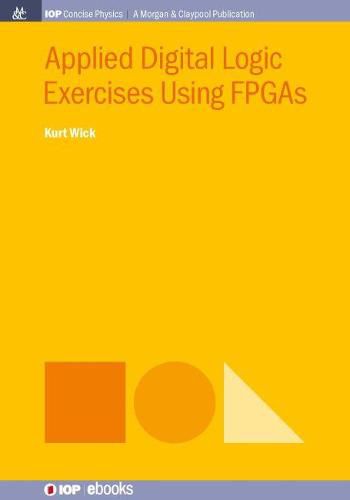Readings Newsletter
Become a Readings Member to make your shopping experience even easier.
Sign in or sign up for free!
You’re not far away from qualifying for FREE standard shipping within Australia
You’ve qualified for FREE standard shipping within Australia
The cart is loading…






This title is printed to order. This book may have been self-published. If so, we cannot guarantee the quality of the content. In the main most books will have gone through the editing process however some may not. We therefore suggest that you be aware of this before ordering this book. If in doubt check either the author or publisher’s details as we are unable to accept any returns unless they are faulty. Please contact us if you have any questions.
FPGAs have almost entirely replaced the traditional Application Specific Standard Parts (ASSP) such as the 74xx logic chip families because of their superior size, versatility, and speed. For example, FPGAs provide over a million fold increase in gates compared to ASSP parts.
The traditional approach for hands-on exercises has relied on ASSP parts, primarily because of their simplicity and ease of use for the novice. Not only is this approach technically outdated, but it also severely limits the complexity of the designs that can be implemented. By introducing the readers to FPGAs, they are being familiarized with current digital technology and the skills to implement complex, sophisticated designs. However, working with FGPAs comes at a cost of increased complexity, notably the mastering of an HDL language, such as Verilog.
Therefore, this book accomplishes the following: first, it teaches basic digital design concepts and then applies them through exercises; second, it implements these digital designs by teaching the user the syntax of the Verilog language while implementing the exercises. Finally, it employs contemporary digital hardware, such as the FPGA, to build a simple calculator, a basic music player, a frequency and period counter and it ends with a microprocessor being embedded in the fabric of the FGPA to communicate with the PC. In the process, readers learn about digital mathematics and digital-to-analog converter concepts through pulse width modulation.
$9.00 standard shipping within Australia
FREE standard shipping within Australia for orders over $100.00
Express & International shipping calculated at checkout
This title is printed to order. This book may have been self-published. If so, we cannot guarantee the quality of the content. In the main most books will have gone through the editing process however some may not. We therefore suggest that you be aware of this before ordering this book. If in doubt check either the author or publisher’s details as we are unable to accept any returns unless they are faulty. Please contact us if you have any questions.
FPGAs have almost entirely replaced the traditional Application Specific Standard Parts (ASSP) such as the 74xx logic chip families because of their superior size, versatility, and speed. For example, FPGAs provide over a million fold increase in gates compared to ASSP parts.
The traditional approach for hands-on exercises has relied on ASSP parts, primarily because of their simplicity and ease of use for the novice. Not only is this approach technically outdated, but it also severely limits the complexity of the designs that can be implemented. By introducing the readers to FPGAs, they are being familiarized with current digital technology and the skills to implement complex, sophisticated designs. However, working with FGPAs comes at a cost of increased complexity, notably the mastering of an HDL language, such as Verilog.
Therefore, this book accomplishes the following: first, it teaches basic digital design concepts and then applies them through exercises; second, it implements these digital designs by teaching the user the syntax of the Verilog language while implementing the exercises. Finally, it employs contemporary digital hardware, such as the FPGA, to build a simple calculator, a basic music player, a frequency and period counter and it ends with a microprocessor being embedded in the fabric of the FGPA to communicate with the PC. In the process, readers learn about digital mathematics and digital-to-analog converter concepts through pulse width modulation.